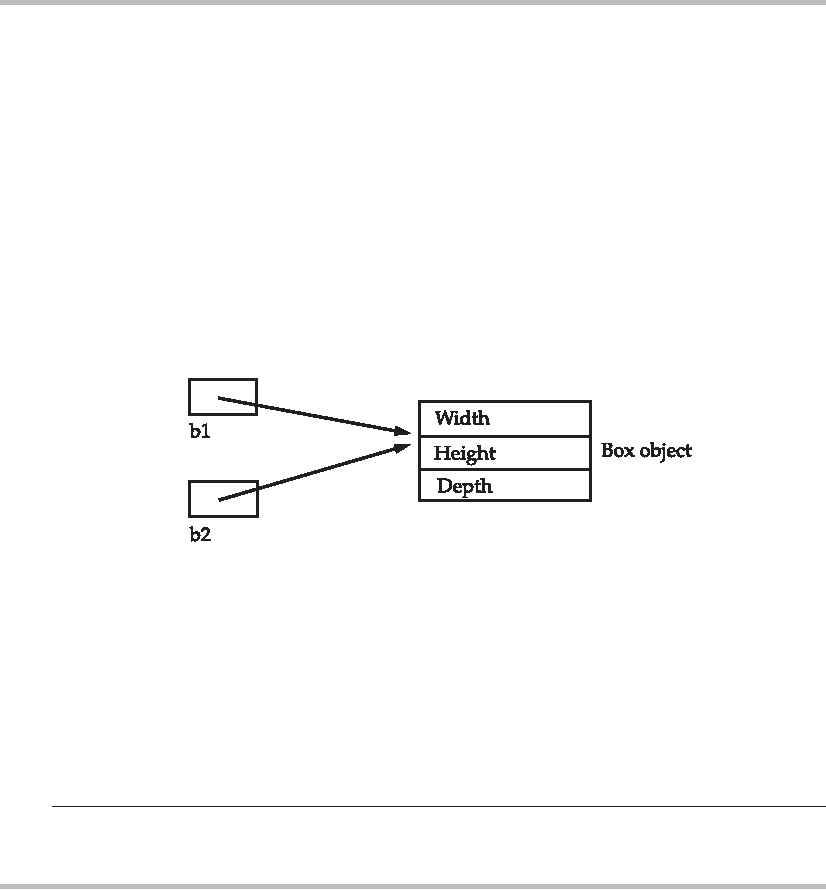Assigning Object Reference Variables
Object reference variables act differently than you might expect when an assignment takes
place. For example, what do you think the following fragment does?
Box b1 = new Box();
Box b2 = b1;
You might think that b2 is being assigned a reference to a copy of the object referred to by
b1. That is, you might think that b1 and b2 refer to separate and distinct objects. However,
this would be wrong. Instead, after this fragment executes, b1 and b2 will both refer to the
same object. The assignment of b1 to b2 did not allocate any memory or copy any part of the
original object. It simply makes b2 refer to the same object as does b1. Thus, any changes
made to the object through b2 will affect the object to which b1 is referring, since they are the
same object.
This situation is depicted here:
Although b1 and b2 both refer to the same object, they are not linked in any other way.
For example, a subsequent assignment to b1 will simply unhook b1 from the original object
without affecting the object or affecting b2. For example:
Box b1 = new Box();
Box b2 = b1;
// ...
b1 = null;
Here, b1 has been set to null, but b2 still points to the original object.
REMEMBER When you assign one object reference variable to another object reference variable,
EMEMBER
you are not creating a copy of the object, you are only making a copy of the reference.
Introducing Methods
As mentioned at the beginning of this chapter, classes usually consist of two things: instance
variables and methods. The topic of methods is a large one because Java gives them so much
power and flexibility. In fact, much of the next chapter is devoted to methods. However, there
are some fundamentals that you need to learn now so that you can begin to add methods to
your classes.
Search WWH :


